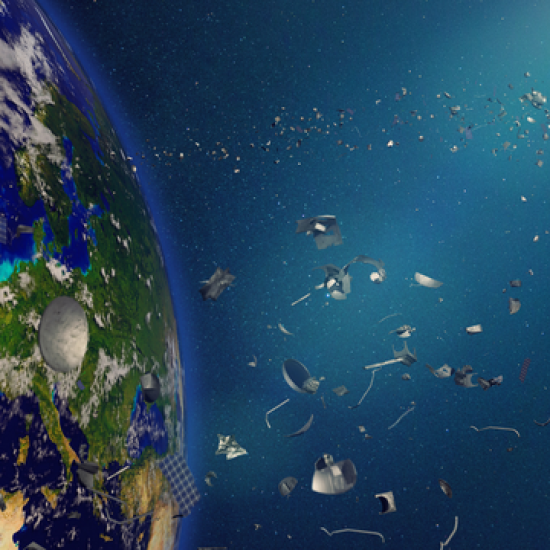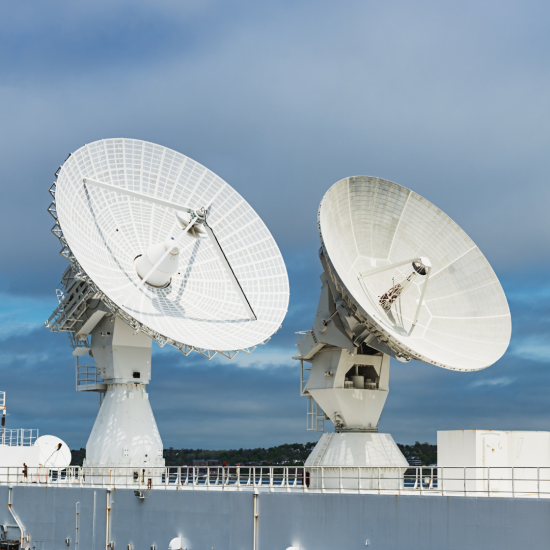By Taskeen Ali (UK Space Agency), Alberto Behar (IMF), John Clift (NormannPartners) and Rafael Ramirez.
The International Space Station (ISS) has hosted astronauts 420km above the Earth’s surface for two decades, and now this extraordinary global collaboration is coming to an end.
Amid rising geopolitical tensions, Russia is withdrawing from the $150 billion project in 2025, punctuating an era of the trailblazing ISS that the US and Russia have worked on alongside their European, Japanese and Canadian counterparts since 1998. The space station will remain in orbit until 2031, but eventually it will come back down to Earth.
When one door closes, another opens. The race is now on to reinvent the space station. American companies including Jeff Bezos’s Blue Origin, as well as Lockheed Martin and Nanoracks have joined a Nasa-funded competition to design privately owned replacements for the ISS. The private sector space economy — spanning research, manufacturing and tourism — is already growing at a rapid rate, and regulators and governance are struggling to keep pace.
Last year the head of the European Space Agency warned that Elon Musk’s rush to launch thousands of communications satellites would crowd out rivals, because there would be fewer radio frequencies and orbital slots. SpaceX, the billionaire’s private space company, has so far launched more than 2,000 satellites, fuelling concern over the absence of a workable space traffic management system.
The most commercially interesting altitudes around the Earth are becoming increasingly congested — and the context now presents turbulent, uncertain, novel and ambiguous (TUNA) conditions well-served by scenario planning. This TUNA situation poses risks to the global economy, including issues such as space debris, cyber threats, and terrestrial infrastructure failures.
Up to now, macroeconomists have not dedicated much attention to the examination of space because they have had insufficient knowledge of the potential economic significance.
It was a serendipitous meeting in 2019 over coffee and biscuits during the Oxford Scenarios Programme at Saïd Business School that proved to be the spark for this paper when Alberto Behar from the International Monetary Fund (IMF) and Taskeen Ali from the UK Space Agency met, and Alberto said ‘why don't you send me a page about why macroeconomists should look into space?’
Given the growing importance of space to the global economy, those initial bullet points turned into a more in-depth inquiry to determine the strategic implications. Taskeen teamed up with John Clift (NormannPartners) and Rafael Ramirez from the School and applied the Oxford Scenario Planning Approach to assess the overall possible strategic direction which the space sector might take. Four scenarios for plausible futures emerged from this work, which raised awareness of how technology and the economics of outer space – the exo-earth economy - are becoming imbricated with the economics of earth. This set the stage for further collaboration on the macro-economic implications of these scenarios with Alberto.
From the cloud to the nebula
The first scenario envisioned a future in which global space activity choices might have an important impact on the environment and provide solutions for earth. In this world, climate change and sustainability are accepted as key global issues. So, some polluting industries move up into Earth’s orbit, taking their carbon emissions with them. ‘Free’ solar energy and heat dissipation are also attractive to these industries.
Power play
In the second plausible future, the private sector continues to make headway into outer space. Slow moving and toothless global regulation makes it easy for private firms to dominate the sector. This creates tensions with governments, given that financial risks in space are irrevocably linked to Earth.

Grounded
In this world, most low-orbit exploration becomes impossible because of either a ‘Kessler event’ (a chain reaction of cascading collisions), or an exceptional space weather event, such as a powerful geomagnetic storm. This makes it hard to get into orbit, curtailing many space activities and causing substantial financial losses for the space sector. But new opportunities emerge for ventures that clear space debris, eventually re-opening space.
Renaissance
In the fourth scenario, most governments recognise the threat of climate change, and space is important for Earth observation and a valuable asset in potential mitigation projects. The roles of space agencies are changing due to changing priorities, and there is a significant decline in satellite broadcasting for entertainment purposes as other, or terrestrial technology, enables cheaper, equally reliable solutions such as 5G and its successors.

A serious collision in space would cause investors to re-evaluate investments in the space economy, and it would increase the cost of financing for government budget deficits in countries with higher risks.
These four scenarios provide important insights for actors in the private sector space industry - and those seeking to regulate it. ‘Grounded’ reveals how space might be seen as a source of systemic risk to global economic growth and financial stability, particularly as space becomes increasingly more vital for terrestrial activity and for key communication infrastructures.
In financial markets, periods of elevated global uncertainty tend to prompt a 'flight to safety' as investors sell riskier assets. A serious collision in space would cause investors to re-evaluate investments in the space economy, and it would increase the cost of financing for government budget deficits in countries with higher risks. A potential solution is a tax on presence or debris in space, which could fund clean-up efforts and reduce incentives to pollute in the first place, and simultaneously finance governments. But if excessive, such a tax could stifle growth in the space sector.
Governments might need to agree a system of tax collection and revenue-sharing on the activity — and this will require basic jurisdictional and property rights to be established.
Another key insight: the ‘power play’ scenario shatters some settled assumptions about the space economy, which has historically been governed by nation states. However, the increasing commercialisation of space means the private sector could play a more dominant role in geopolitics. Regulation becomes more relevant in this scenario, which also underscores a need for more global collaboration and coordination.
In addition, legal frameworks may also need to rethink property rights. At present, no country can claim sovereignty over outer space or a celestial body, but upgrades of inclusive property rights would better facilitate private ventures, while protecting the public interest. As space explorations expand, international law and regulation will need to keep up.
Another question is whether space ventures, financed by billionaire entrepreneurs, could become too big to fail in space. If systemic companies were to go bankrupt because of failure in space ventures, this could have large negative spill-over effects on Earth. There may be a legal and economic case for incentivising such companies to reduce their exposure to very big bets.
Such questions are likely to come into sharper focus as the space sector continues to expand in the years ahead. Scenario planning ultimately provides a framework with which to examine these novel questions. Above all, it has revealed the need for more interaction between the space industry and macroeconomics.
Research
This article is based on a research paper Reframing Space: Macroeconomists Engage Outer Space with the Help of Scenario Planning in the Journal of Future Studies by Taskeen Ali - UK Space Agency, Alberto Behar - IMF, John Clift - NormannPartners and Rafael Ramirez - University of Oxford.
Rafael is the Director of the Oxford Scenarios Programme and it is thanks to him that Taskeen, Alberto and John, all alumni of the programme, were given the space and support to develop the ideas behind this paper.
If you would like to learn more about the opportunities and challenges of the global space industry you can follow our Oxford Smart Space series.




